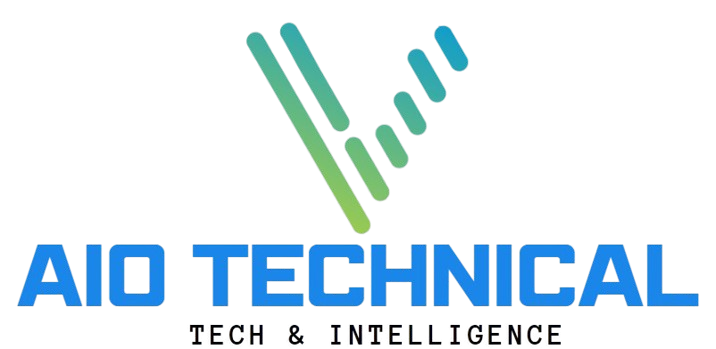Easy Technology : Making the Digital World Accessible for Everyone

Introduction
In today’s fast-paced world, technology is an integral part of our daily lives. However, not everyone is a tech expert, which can create barriers to access and usability. This is where Easy technology comes into play. Defined as devices, apps, and systems designed to be user-friendly, accessible, and intuitive, it ensures that individuals of all ages and technical backgrounds can navigate the digital landscape effortlessly. This article will explore the evolution, importance, and impact of it, illustrating its role in fostering inclusivity and enhancing everyday life.
The Evolution
From Complexity to Simplicity
In the early days of computing, technology was often characterized by complexity. Users faced challenges with intricate operating systems, programming languages, and convoluted setup processes. Over time, however, the landscape began to shift. The advent of graphical user interfaces (GUIs), touchscreens, and plug-and-play devices marked the beginning of a more accessible technological era.
Key Milestones
- Graphical User Interfaces: The introduction of GUIs allowed users to interact with computers visually, significantly reducing the learning curve.
- Touchscreen Technology: This innovation made devices like smartphones more intuitive, allowing users to engage directly through touch.
- Smart Devices: With the rise of smart home technology, ease of use became a primary focus, making it possible for anyone to control devices with simple commands.
These advancements laid the groundwork for the it we see today.
Key Features
User-Friendly Interfaces
One of the hallmarks of easy technology is user-friendly interfaces. These interfaces prioritize clarity and simplicity, enabling users to navigate without confusion. Minimal jargon and clear instructions help demystify technology for all users.
Plug-and-Play Functionality
Devices with plug-and-play functionality work as soon as they are connected, eliminating the need for complex setups. This feature is especially beneficial for those who may not have extensive technical knowledge.
Cross-Device Compatibility
Easy technology often includes cross-device compatibility, allowing different systems and devices to work together seamlessly. This integration enhances the user experience by reducing the need for multiple apps or complicated configurations.
Continuous Updates
To remain user-friendly, easy technology often incorporates regular updates that improve usability and address any bugs or security concerns. This commitment to continuous improvement ensures that users always have access to the latest features without confusion.
The Importance
Bridging the Digital Divide
It plays a crucial role in bridging the digital divide. As more services transition online—such as banking, healthcare, and education—ensuring accessibility for everyone becomes paramount. By simplifying technology, more individuals can engage with digital services confidently.
Empowering Non-Tech-Savvy Users
Easy technology empowers those who may struggle with traditional tech, such as older adults or individuals with disabilities. By designing products that prioritize ease of use, manufacturers help create an inclusive environment where everyone can thrive.
Enhancing Productivity
The time saved by using it can lead to significant productivity gains. When users can focus on the task at hand without grappling with complex systems, their efficiency improves, whether at home, in the office, or in educational settings.
Examples
Smartphones
Modern smartphones exemplify easy technology. With intuitive interfaces, voice commands, and a plethora of user-friendly apps, they have transformed communication, entertainment, and productivity.
Smart Home Devices
Devices like Amazon Alexa and Google Nest allow users to control their home environments with simple voice commands. These smart home systems have made it easier than ever to manage daily tasks and enhance convenience.
Wearable Technology
Fitness trackers and smartwatches, such as the Apple Watch, offer health data at a glance, enabling users to monitor their fitness levels without needing complex setups or in-depth tech knowledge.
Technology in Education
Online Learning Platforms
Platforms like Khan Academy and Coursera exemplify it in education. They are designed to be straightforward, allowing learners of all ages to access courses and materials without requiring technical support.
Accessibility for All Students
It is crucial for creating inclusive learning environments. Tools like screen readers and speech-to-text software ensure that students with disabilities can engage with educational content alongside their peers.
Remote Learning Tools
During the pandemic, tools like Zoom and Google Meet demonstrated the power of easy technology in education. Their user-friendly interfaces allowed teachers and students to connect seamlessly, fostering continued learning.
Technology in Business
Streamlining Operations
In the business world, easy technology helps streamline operations. Tools like Slack and Trello are designed for intuitive collaboration, allowing teams to communicate and manage projects efficiently.
Reducing IT Complexity
With cloud services and user-friendly software, businesses can reduce their dependency on large IT teams. This shift leads to leaner operations and allows employees to focus on their core responsibilities.
Examples of Popular Business Tools
Business applications like Microsoft 365 and Google Workspace are designed for accessibility, allowing employees at all levels to use powerful tools without extensive training.
The Role of AI
Simplifying User Experiences
Artificial Intelligence (AI) is increasingly central to easy technology. By learning from user interactions, AI can streamline processes and make personalized recommendations, enhancing the overall experience.
Voice Assistants
Voice assistants like Siri, Alexa, and Google Assistant exemplify how AI can simplify daily tasks. Users can control devices, set reminders, and search for information through simple voice commands, making technology even more accessible.
Challenges in Developing
Balancing Simplicity and Functionality
Creating easy technology involves a delicate balance between maintaining functionality and simplicity. Developers must ensure that powerful features are still accessible without overwhelming users.
Ensuring Security
As technology becomes easier to use, security remains a paramount concern. Developers must implement robust security measures without compromising the user-friendly experience, such as offering clear security prompts without confusing jargon.
The Future
Continued Focus on Accessibility
The future of easy technology will prioritize accessibility even further. As emerging technologies like augmented reality (AR) and virtual reality (VR) become mainstream, ensuring these innovations remain user-friendly will be essential.
Enhancing Digital Literacy
As it becomes more prevalent, it can significantly boost digital literacy. By enabling users to engage with technology confidently, we can bridge generational gaps and empower individuals of all backgrounds.
Conclusion
Easy technology has transformed how we interact with the digital world. By emphasizing simplicity, these innovations make it possible for everyone—from children to seniors—to benefit from the latest advancements without frustration or confusion. As we continue to push the boundaries of technology, ensuring it remains accessible and intuitive will be crucial in shaping a future where technology serves us all, effortlessly. This article has been prepared by the editorial team at V Aiotechnical.com, reflecting our commitment to providing insightful and professional content on technology and its impact on our lives.





